- Home
- Peter Ackroyd
London: The Biography Page 12
London: The Biography Read online
Page 12
London itself was a city of churches, containing a larger number than any other city in Europe. There were more than a hundred churches within the walls of the old City, sixteen alone devoted to St. Mary, and it can reasonably be inferred that many were originally of Saxon date and of wooden construction. In London Walter Besant has noted that “there was no street without its monastery, its convent garden, its college of priests, its friars, its pardoners, its sextons and its serving brothers.” This may seem exaggerated but, although not every lane and alley contained a monastery or a convent garden, a look at any map will show that the main thoroughfares did indeed harbour religious institutions great and small. Beside the 126 parish churches there were thirteen conventual churches, including St. Martin’s le Grand and the Priory of St. John of Jerusalem; there were seven great friaries, including the Carthusian friars of Hart Street; there were five priories, among them St. Bartholomew the Great in Smithfield and St. Saviour’s in Bermondsey; there were four large nunneries and five priests’ colleges. Of the hospitals and refuges, for the sick and the indigent, we have records of seventeen in areas as diverse as Bevis Marks and Aldgate, Charing Cross and St. Laurence Pountney (among them a refuge for the insane at Barking, and thus the phrase “barking mad”). This is not to mention the chantries, the church schools and the private chapels. It is a further indication of the sanctity of London that in the thirteenth and fourteenth centuries there was continual reconstruction of these sacred edifices. The piety of Londoners is not in doubt.
The evidence of medieval wills in London is of some consequence, and in the last testaments of John Toker, vintner (1428), of Robert Ameray, cordwainer (1410), of Richard Whyteman, wax-chandler (1428), and Roger Elmesley, wax-chandler’s servant (1434), there are tokens of a simple but profound piety. In the details of these testaments there is all the paraphernalia of ordinary London life, with bequests of towels and spoons, beds and blankets; Roger Elmesley left an iron rack for roasting eggs as well as some peacock feathers and “my roller for a towell,” but his main wish was that he be buried “vnder the stone with-oute the Dore of the porche” of St. Margaret Pattens in Little Tower Street. He was concerned also with the spiritual destiny of his godson, to whom he left “a prymmer for to serve god with,” as well as “a litel cofur to putte in his smale thynges.” All of these wills mention sums of money to be given to the poor, or the imprisoned, or the sick, on condition that these disadvantaged would then pray for the soul of the departed. John Toker the vintner, for example, gave various bequests to the priests of St. Mildred’s in Bread Street “forto praie for my soule” with other moneys to be paid to the prisoners of “Ludgate, Marchalsie Kyngesbenche,” as well as to the “pore folk lying sike in the spitell of our lady with-oute Bisshopes-gate, Oure lady of Bedlem, Oure lady of Elsingspitel, of Seynt Bathilmewys in Smythfeeld, And seint Thomas in Sowthwerk.” Many of these institutions exist today, albeit in altered form, while others linger only in the folk memory of London. John Toker left to his apprentice Henry Thommissone “my mancion that is cleped the Mermaid in Bredstreet” which is the very same tavern where Shakespeare and Jonson were supposed to have drunk. The history of London is a palimpsest of different realities and lingering truths.
The patron saint of the medieval city was a seventh-century monk who ruled as the bishop of London: Erkenwald was the spiritual leader of the East Saxons for eighteen years and, after his death, many miracles were vouchsafed on his behalf. The wooden cart or litter upon which Bishop Erkenwald would travel through the streets of London, when age and sickness prevented him from walking through his diocese, became the centre of a cult. Fragments and splinters of this vehicle were credited with curative properties, and the litter was enshrined behind the main altar of St. Paul’s with the relics of the saint himself. The physical remains of Erkenwald were sealed within a leaden casket which was fashioned “in the form of a gabled house or church,” thus rendering in sacred space the physical topography of the city itself.
The cult of Erkenwald survived for many centuries, testifying once more to the piety or credulity of the citizens. There was a miracle at Stratford, where now an industrial park is sited by the River Lea, as well as many other reported wonders in the thoroughfares around St. Paul’s itself. It was in fact something of a miracle that the physical remains of St. Erkenwald survived the various fires that visited the cathedral, most notably the great fire of 1087, after which the relics were placed in a silver shrine befitting Lundoniae maxime sanctus, “the most holy figure of London.” We read of the servants of the abbey moving the body of the saint to yet another great shrine clandestinely by night, since its exposure during the day would have created hysteria among the crowd assembled. This devotion was not of the populace alone. Even in the early sixteenth century the shrine of St. Erkenwald was an object of pilgrimage to the most successful lawyers of London who, on being nominated as serjeants of law, would walk in procession to St. Paul’s in order to venerate the physical presence of the saint.
Legends of dead saints may seem of little relevance, but they were part of the very texture of London life. The citizens when they first carried Erkenwald’s body to the cathedral, declared: “We are like strong and vigorous men who will … undermine and overturn cities heavily fortified with men and weapons before we will give up the servant of God, our protector … we ourselves intend that such a glorious city and congregation should be strengthened and honoured by such a patron.” There is indeed an Erconwald Street in the western part of the twenty-first-century city. So we may still name him as the patron saint of London, whose cult survived for over eight hundred years, before entering the temporary darkness of the last four centuries.
· · ·
The medieval city can be understood in a variety of ways, therefore, whether in terms of its violence or its devotion, its commercial imperatives or its spiritual precepts. The bells of the church tolled the end of each trading day, and the traders’ weights were tested and measured at the market cross. Could we say that the administrators of the Church in London were thoroughly secularised? Or that the citizens, avid for trade and capable of great savagery, were thoroughly spiritualised? The question lends absorbing interest to the lives of medieval Londoners. Perhaps the perpetual press of business and of domestic routine was viewed in the terms of eternity. Perhaps there was so much savagery because life itself, in contrast to the immortal soul, was considered to be relatively worthless. The city then becomes the true home of fallen humankind.
Onward and Upward
A mid-sixteenth-century map of Moorfields, north of London. Some women dry linen upon the ground, while the citizens engage in archery. The line of Bishopsgate Street marks the accelerating growth of the city.
CHAPTER 8. Rather Dark and Narrow
John Stow, the great sixteenth-century antiquarian, offered the most vivid and elaborate description of Tudor London. He wrote of new streets and new buildings continually springing up beyond the walls and, within the city itself, of “encroachments on the highways, lanes, and common grounds.” Where once there had been sheds or shops, in one of which an old woman used to sell “seeds, roots and herbs,” there were now houses “largely built on both side outward, and also upward, some three, four or five stories high.” Growth is the continual condition of the city, but one which Stow himself lamented when it encroached upon the ancient topography of the place which he had known as a child in Cordwainer Lane.
We can follow John Stow down Butchers’ Alley, beside St. Nicholas Shambles and Stinking Lane, where he discoursed on the rising price of meat. In the old days, he said, a fat ox was sold for 26s 8d “at the most” and a fat lamb for a shilling, but “what the price is now I need not to set down.” In such local touches, Stow stands alone among the chroniclers of the city. It was said that “he reporteth res in se minutas, toys and trifles, being such a smell-feast that he cannot pass by Guildhall, but his pen must taste of the good chear therein.” But that is what makes him such an excellent
London surveyor, and such a characteristic Londoner. In his Survey of London, he provides a detailed and immediate account of the lanes and alleys which he had known all his life.
He was born in 1525 and came from at least two generations of tallow chandlers who resided in Threadneedle or Threeneedle Street; Thomas Cromwell, Henry VIII’s familiar councillor, encroached upon his father’s garden there, and Stow ruefully noted “that the sudden rising of some men causeth them in some matters to forget themselves.” Little is known of any formal education which Stow may have received, although it is likely that he attended one of London’s free grammar schools. He himself recalled how he used to walk to a farm belonging to the nuns of the Minories where “I myself have fetched many a halfpenny worth of milk,” thus indicating that there was grazing land by the very walls of the city. But of other juvenile incidents he is silent. It is known that he took up the profession of a tailor, however, and established himself in a house by the well at Aldgate close to the farm where he had bought milk as a child, but his true labours had not yet begun.
Antiquarian studies seem to be an instinctive London passion, and Stow remains their greatest exemplar. It is appropriate that his first work should be an edition of Chaucer; that fine London poet was Stow’s original pursuit before he turned to the city which nourished his genius. He began the study of London records, primarily kept in the Guildhall, as a “fee’d chronicler”; we may imagine him among slips of parchment, manuscript rolls and broken-backed volumes, trying to decipher the history of his city. In one of his first volumes, A Summarie of Englyshe Chronicles, he wrote that “It is now eight years since I, seeing the confused order of our late English Chronicles, and the ignorant handling of ancient affairs, leaving mine own peculiar gains, consecrated myself to the search of our famous antiquities.” This might suggest that he had abandoned his trade as a tailor in order to devote himself to historical study, but extant documents show that he maintained his business for some time. He complained about being called a “prick-louse,” an invidious catchphrase for those who sewed as a profession, and he testified that a neighbour threw stones and tiles at his apprentice.
The “antiquities” were all around him. A few yards from his own house, between Billiter Lane and Lime Street, were buried a wall and gate of stone “about two fathoms deep” under the ground. They had been discovered after demolition work in 1590; Stow investigated the curiosity, and believed the old stonework to date from the reign of King Stephen some 450 years before. The ground of London was always rising, built again and again upon the ash and rubble of its previous incarnations. Stow walked everywhere, and once confessed that his labours “cost many a weary mile’s travel, many a hard-earned penny and pound, and many a cold winter night’s study.” He was tall and lean, “of a pleasant and cheerful countenance; his sight and memory were good; very sober, mild, and courteous to any that required his instructions.”
There was much to instruct since, in the early sixteenth century, London would indeed have been an antiquarian’s delight. Stow often mentions the presence of great houses “of old time built upon arched vaults, and with gates of stone” which date from the eleventh and twelfth centuries; there would still have been extant walls, pillars and pavements from the Roman period. Much of the brick and masonry of that early time had been pillaged for modern rebuilding, but there is no doubt that there would have been evidence of the first century in succeeding periods of London’s history. Yet much also was being destroyed even as Stow continued his survey. The Reformation of faith, inaugurated by Henry VIII, wreaked a sudden transformation upon the buildings as well as the beliefs of London. The fabric of the Roman communion, to which the citizens had so fervently attached themselves, was shattered; the uncertainty and bewilderment of Londoners were in turn embodied in the changing fabric of the city itself where monasteries and chantry chapels and lady chapels were vandalised or broken. The dissolution of the abbeys, churches and monastic hospitals in particular meant that the entire city was in a fevered period of demolition and construction. Parts of it would have resembled a vast building site, while other areas were left to slow neglect and in Stow’s words became “sore decayed.”
London was in many respects a place of ruins. Stow notes the remains of an “old court hall” in Aldermanbury Street, now “employed as a carpenter’s yard.” A mayor’s great house in Old Jewry became in turn a synagogue, a house of friars, a nobleman’s house, a merchant’s house, and then a “wine tavern” known as the Windmill. A chapel became a “warehouse and shops towards the street, with lodgings over them,” bishops’ houses were turned into tenements, and so on. Other documentary sources reveal that a Cistercian house was pulled “clean down” and in its place were erected storehouses, tenements and “ovens for making ship’s biscuit.” The convent of the Poor Clares, known as the Minories, was destroyed to make way for storehouses; the church of the Crutched Friars became a carpenter’s shop and a tennis court; the church of the Blackfriars was turned into a warehouse for the carts and properties of the “pageants.” (It is perhaps appropriate that on this same site rose the Blackfriars Playhouse.) St. Martin’s le Grand was pulled down and a tavern built upon its remains.
There are many other examples, but the salient point remains that after the Reformation much of late Tudor London was in a ruined condition, with walls and gateways and ancient stone windows to be glimpsed among the shops and houses which lined the lanes and thoroughfares. Even in the area outside the walls, where the palaces of the bishops and nobles had led down from the Strand towards the river, the grand houses were, according to the Venetian ambassador, “disfigured by the ruins of a multitude of churches and monasteries.”
Yet even in the midst of lamentation there was also renovation. In Goldsmiths Row, between Bread Street and Cheapside Cross, Stow extols the shops and dwellings-built just thirty-five years before his birth- which are “beautified towards the street with the Goldsmith’s arms … riding on monstrous beasts, all of which is cast in lead, richly painted over and gilt.” A fifteenth-century traveller, Dominic Mancini, noted, in the same area, “gold and silver cups, dyed stuffs, various silks, carpets, tapestry.” These are the true tinctures of Tudor London. An old church may be pulled down, but in its place Stow remarks that there has been erected “a fair strong frame of timber … wherein dwell men of divers trades.” An old cross is removed, and on the same site is constructed a glistening water-conduit. An aristocratic dwelling is converted into a market “for the sale of woollen baize, watmols [coarse wool], flannels and such like.” A stone building of great antiquity is gradually taken down and in its place are erected “divers fair houses.”
This is the trade, and energy, of Tudor London. Stow himself, quintessential Londoner as he is, cannot prevent himself from enumerating the gardens, the mills, the houses of stone and timber, the taverns, the conduits, the stables, the yards, the hostelries, the markets, the tenements and guild halls which comprise the city’s life.
The older versions of the grand London house, established around a separate hall and courtyard, were no longer appropriate to the new conditions of the city; they were built over, or encroached upon, by smaller dwellings in streets which were already acquiring a reputation for being “rather dark and narrow.” Even the mansions of the wealthy merchants were now more compact, with a shop and warehouse on the ground floor, a hall and parlour on the first floor and the other living quarters above; it was not uncommon for such a house to rise to five or six storeys, with two rooms on each level, in the customary timber and mortar fashion. Such was the premium upon space in the bustling city that cellars and garrets were utilised as dwellings for the poor. Estimates of population can only be approximate but there are figures of 85,000 by 1565, rising to 155,000 by 1605; this does not include those who lived in “the liberties” or within “the bars,” which would increase the figures by more than 20,000. It represents, to use a perhaps anachronistic phrase, a population explosion.
The price o
f property had risen so steeply that no one would willingly demolish even the smallest shop or house. So the growth of the city meant that the ancient ditches, used for both defence and refuse, were now filled in and covered over and became the site of more properties. The main roads leading to the city gates were “improved” and paved, so that within a very short time shops and houses were erected beside them. The road to Aldgate, for example, was, according to Stow, “not only fully replenished with buildings outward” but “also pestered with divers alleys on either side to the bars.” Even the fields beyond the city, where once the younger citizens had shot their arrows or walked among the streams, had “now within a few years made a continual building throughout of garden houses and small cottages, and the fields on either side turned into garden plots, tenter yards, bowling alleys, and such like.”
The overcrowding became so serious that, in 1580, Elizabeth I issued a proclamation “perceiving the state of the city of London (being anciently termed her chamber) and the suburbs and confines thereof to increase slowly, by access of people to inhabit the same” so that there was no chance of sustaining “victual food, and other like necessaries for man’s life, upon reasonable prices, without which no city can long continue.” There was further cause for alarm concerning the overpopulation within the city itself “where there are such great multitudes of people brought to inhabit in small rooms, whereof a great part are seen very poor, yea, such as must live begging, or by worse means, and they heaped up together, and in a sort smothered with many families of children and servants in one house or small tenement.” This is one of the earliest accounts of overcrowding in London, and can be considered the first extended version of a description which has haunted the city ever since. The queen’s remedy was to prohibit “any new buildings of any house or tenement within three miles from any of the gates of the said city of London.” It has been suggested that this was the first venture at a “green belt” around London, a surmise which would at least have the merit of emphasising the historical continuity within all apparently “modern” plans for the city, but it was more likely to be an attempt to protect the trading and commercial monopoly of the citizens within the walls who did not relish the appearances of trades and shops beyond their jurisdiction.

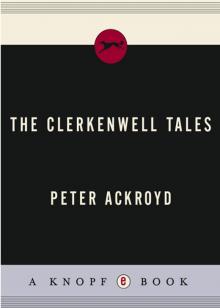 The Clerkenwell Tales
The Clerkenwell Tales The Canterbury Tales
The Canterbury Tales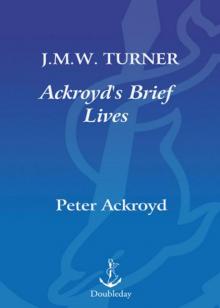 J. M. W. Turner
J. M. W. Turner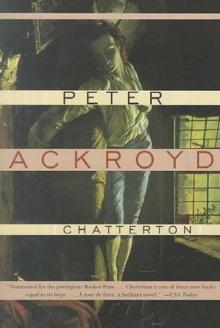 Chatterton
Chatterton The Canterbury Tales – A Retelling
The Canterbury Tales – A Retelling Alfred Hitchcock
Alfred Hitchcock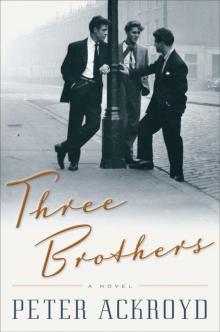 Three Brothers
Three Brothers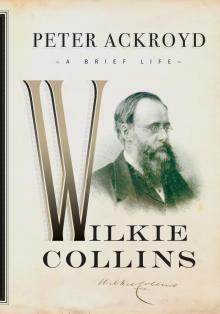 Wilkie Collins
Wilkie Collins Venice
Venice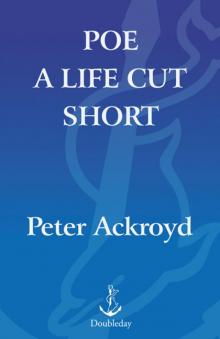 Poe
Poe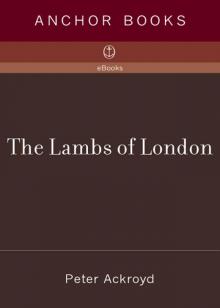 The Lambs of London
The Lambs of London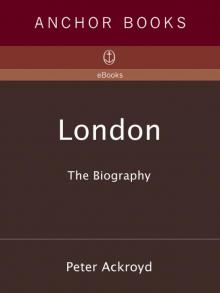 London
London Queer City
Queer City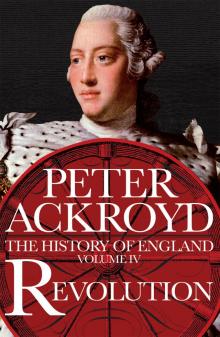 Revolution, a History of England, Volume 4
Revolution, a History of England, Volume 4 Venice: Pure City
Venice: Pure City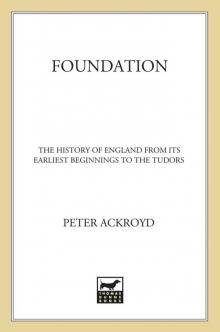 Foundation
Foundation Thames
Thames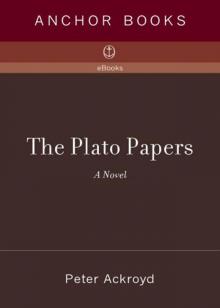 The Plato Papers
The Plato Papers The house of Doctor Dee
The house of Doctor Dee Rebellion: The History of England from James I to the Glorious Revolution
Rebellion: The History of England from James I to the Glorious Revolution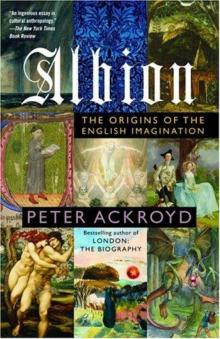 Albion: The Origins of the English Imagination
Albion: The Origins of the English Imagination The Fall of Troy
The Fall of Troy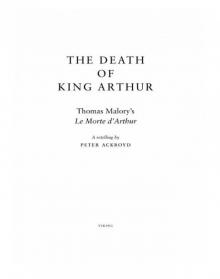 The Death of King Arthur
The Death of King Arthur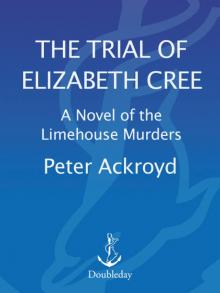 The Trial of Elizabeth Cree
The Trial of Elizabeth Cree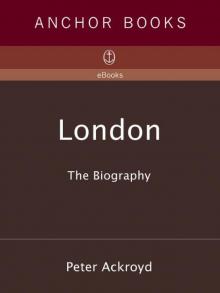 London: The Biography
London: The Biography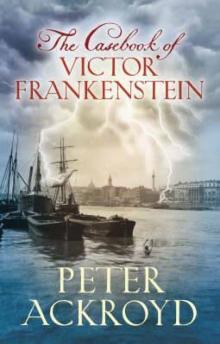 The Casebook of Victor Frankenstein
The Casebook of Victor Frankenstein Hawksmoor
Hawksmoor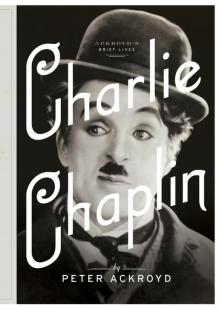 Charlie Chaplin
Charlie Chaplin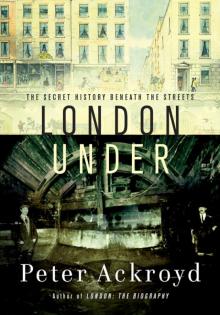 London Under
London Under